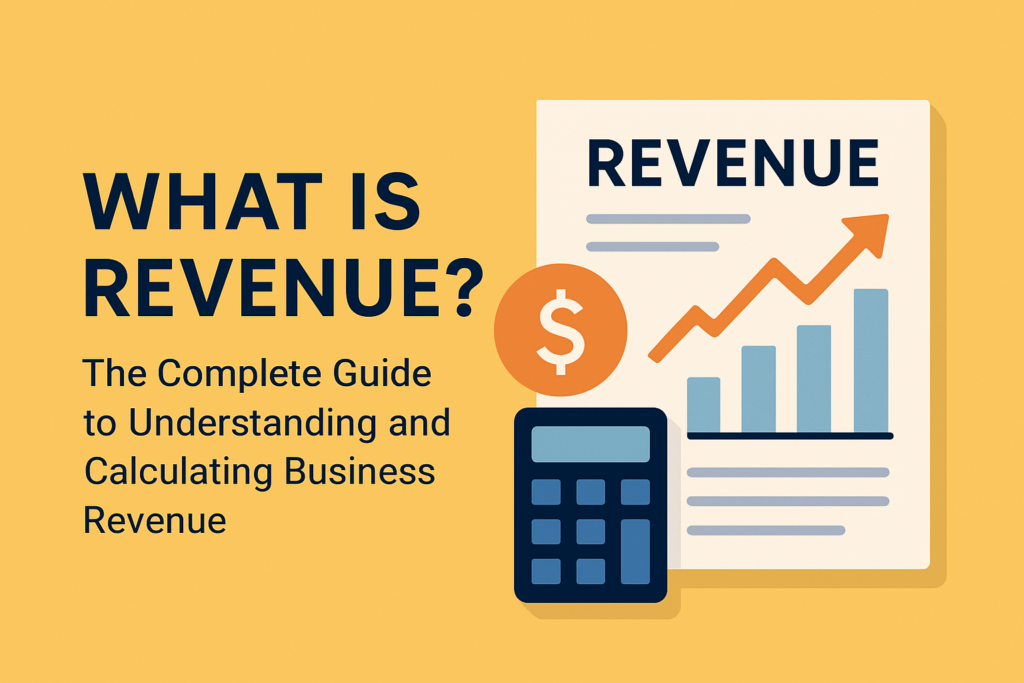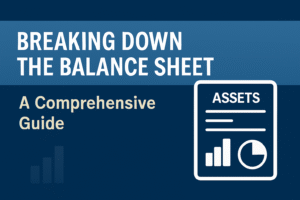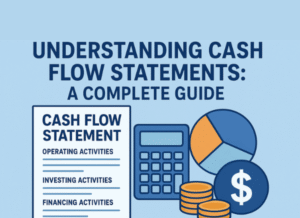Revenue is the total amount of money a business earns through its operations, typically from the sale of goods and services to customers. Often referred to as the “top line” or “gross income,” revenue serves as the starting point for calculating profitability. It reflects the effectiveness of a company’s sales and marketing efforts, pricing strategy, and overall demand for its products or services.
Revenue is a critical indicator of financial performance, investor confidence, and market share. It is also one of the primary metrics analyzed by stakeholders, including shareholders, lenders, analysts, and potential investors, when evaluating the health and trajectory of a business. Unlike profit, revenue does not account for any expenses incurred during the operation of the business.
Understanding Revenue
Revenue encompasses all inflows from a company’s core operating activities. These inflows are recognized during a specific accounting period and help assess a business’s ability to generate sales over time. It is crucial to distinguish between operating revenue and non-operating revenue:
- Operating Revenue: Generated from the business’s main activities, such as selling products or providing services.
- Non-Operating Revenue: Includes earnings from secondary sources like interest, dividends, or asset sales.
Proper revenue tracking provides insights into customer behavior, seasonal trends, market effectiveness, and potential areas for improvement or expansion. Companies often report revenue on a quarterly or annual basis in financial statements filed with regulatory agencies.
Example:
A manufacturing company sells 5,000 units of a product at $200 each:
Revenue = 5,000 × $200 = $1,000,000
Revenue Recognition Methods
This is governed by accounting principles that determine the timing and conditions under which revenue is recorded. Two primary methods are recognized under Generally Accepted Accounting Principles (GAAP):
Accrual Accounting
In the accrual method, revenue is therefore recorded when it is earned, regardless of when payment is received. This means revenue is recognized at the time of transaction completion, delivery of goods, or provision of services.
This method aligns with the matching principle, where revenues and their associated expenses are reported in the same period. It provides a clearer picture of financial performance, particularly for businesses with long payment cycles or deferred billing.
Example:
A software company completes a $50,000 installation service in December but receives payment in February. Under accrual accounting, the $50,000 revenue is reported in December.
Cash Accounting
Revenue is recognized only when cash is received. This method is simpler and more suitable for small businesses or sole proprietors that conduct transactions on a cash basis.
However, this method may not reflect obligations or receivables and could distort profitability in periods where services are rendered but not paid for.
Example:
A landscaping company provides $10,000 worth of services in June but is paid in July. Under cash accounting, the revenue is recorded in July.
Revenues and Profit
Revenue and profit are closely related but distinct financial concepts. Revenue is the gross inflow of funds, while profit is the residual income after all expenses have been deducted.
Types of Profit:
- Gross Profit: Revenue minus Cost of Goods Sold (COGS). This measures the profitability of core operations before accounting for operating expenses.
- Operating Profit: Also known as Earnings Before Interest and Taxes (EBIT), this deducts all operating expenses from gross profit.
- Net Profit: The bottom line after deducting taxes, interest, depreciation, and other non-operating expenses.
Example:
- Revenue: $200,000
- COGS: $120,000 → Gross Profit = $80,000
- Operating Expenses: $30,000 → Operating Profit = $50,000
- Taxes & Interest: $10,000 → Net Profit = $40,000
Types of Revenue
Revenue can be classified based on business activities and revenue models:
1. Product Revenue
Generated from the sale of tangible goods. Includes wholesale, retail, or direct-to-consumer sales.
Example:
An electronics retailer sells 1,000 smartphones at $600 each:
Revenue = 1,000 × $600 = $600,000
2. Service Revenue
Earned by providing professional or technical services. It may be billed hourly, per project, or via retainer.
Example:
A law firm charges $250/hour and bills 100 hours in a month:
Revenue = 100 × $250 = $25,000
3. Recurring Revenue
Revenue generated from subscriptions, memberships, or retainers, providing predictable income streams.
Example:
A gym has 500 members paying $40/month:
Revenue = 500 × $40 = $20,000/month
4. Transaction-Based Revenue
Arises from one-time customer purchases, common in retail and e-commerce sectors.
Example:
An online bookstore sells 2,000 books at $15 each:
Revenue = 2,000 × $15 = $30,000
5. Project Revenue
Revenue from large, often customized, contracts or assignments.
Example:
An architectural firm completes a $250,000 commercial building design project.
6. Licensing and Royalty Revenue
Earned from intellectual property usage such as patents, copyrights, trademarks, or software.
Example:
A musician earns 10% royalties on a $1 million album revenue:
Revenue = 10% × $1,000,000 = $100,000
Formula and Calculation of Revenue
Revenue formulas differ depending on the nature of the business.
For Product Sales:
Revenue = Units Sold × Price per Unit
For Services:
Revenue = Hours Worked × Billing Rate
For Subscriptions:
Revenue = Number of Subscribers × Subscription Fee
Example of Revenue
A digital marketing agency earns:
- $10,000 from SEO packages
- $8,000 from website design
- $12,000 from monthly retainers
Total Revenue = $10,000 + $8,000 + $12,000 = $30,000
Revenue vs. Income/Profit
Revenue represents total earnings, while income or profit accounts for operational and non-operational expenses.
| Category | Revenue | Income/Profit |
| Definition | Total business inflow | Residual after expenses |
| Income Statement Position | Top line | Bottom line |
| Business Impact | Measures sales performance | Reflects business viability |
Special Considerations
Several factors impact how revenue is reported and interpreted:
- Discounts and Returns: Reduce gross revenue.
- Deferred Revenue: Payment received for future services; initially recorded as a liability.
- Revenue Manipulation Risks: Overstating sales or underreporting returns can mislead stakeholders.
- Seasonality: Sales trends may vary, influencing periodic revenue reporting.
Government Revenue
Governments collect revenue to fund public services and infrastructure. Primary sources include:
- Taxes: Income, corporate, sales, and excise taxes.
- Fees: Licensing and registration fees.
- Fines: Penalties for legal infractions.
Example:
A state collects $3 billion from income taxes and $500 million from vehicle registration = $3.5 billion in revenue
Nonprofit Revenue
Nonprofits earn revenue through contributions and grants, not commercial transactions.
- Donations: Individual or corporate philanthropic support.
- Grants: Funds from government or foundations.
- Fundraisers and Events: Ticketed galas, auctions, or races.
Example:
A nonprofit earns $100,000 in donations, $50,000 in grants, and $20,000 from an annual fundraiser = $170,000 revenue
Real Estate Revenue
Real estate businesses generate revenue through:
- Property Sales
- Rental Income
- Brokerage Commissions
- Management Fees
Example:
A landlord rents 20 units at $1,500 each = $30,000/month revenue
What Does Revenue in Business Mean?
Revenue defines the gross inflow resulting from the delivery of goods and services to customers. It is a measure of a company’s operational success, market share, and scalability. Without sufficient revenue, a business cannot survive in the long run, regardless of how innovative or efficient it is.
Are Revenue and Cash Flow the Same Thing?
No. While revenue measures earnings, cash flow indicates liquidity.
- Revenue: May include credit sales, regardless of payment.
- Cash Flow: Only reflects money actually received or spent.
A business can report high revenue but struggle with cash shortages if clients delay payments.
What Is the Difference Between Revenue and Income?
Revenue is the gross earnings before deductions. Income (profit) is what remains after subtracting costs.
Example:
- Revenue: $500,000
- Expenses: $420,000
- Income: $80,000
How Does One Generate and Calculate Revenue?
To generate revenue, businesses:
- Develop marketable products or services
- Use effective sales and marketing strategies
- Offer pricing that reflects value and competitiveness
- Build strong customer relationships
Revenue Calculation Example:
A company sells 1,200 software licenses at $100 each.
Revenue = 1,200 × $100 = $120,000
What Is Accrued and Deferred Revenue?
Accrued Revenue
Revenue earned but not yet received in cash or invoiced. It is recorded as an asset until payment is made.
Example:
A business provides services worth $5,000 in December, to be paid in January. This is accrued revenue in December.
Deferred Revenue
Money received before delivering goods or services. It is recorded as a liability and recognized as revenue once earned.
Example:
A magazine publisher receives $120 for a 12-month subscription. Each month, $10 is recognized as revenue; the remaining $110 is deferred.






